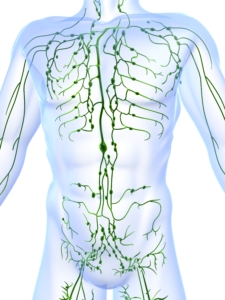What is Lymphoedema?
The lymphatic system has two main functions:
- Move lymphatic fluid from the tissues back to the general circulatory system
- Immunity: protect the body against infections and remove waste products
Lymphoedema is another word for chronic oedema (swelling) just under the skin which has been present for over three months.
Lymphoedema is a failure of the lymphatic system which carries fluid (lymph) from the body’s tissues, through lymph nodes and back to the central bloodstream. This leads to a build up of fluid just under the skin. It most commonly affects the arms or legs but other regions of the body can also be affected.
Causes: Lymphoedema can result from damage to the lymphatic vessels and/or lymph nodes (secondary lymphoedema). Less commonly, a person may be born with an incomplete or slow lymphatic system (primary lymphoedema). In Australia the most common cause of lymphoedema is after some cancer treatments but there are other numerous causes such as recurrent skin infections, vein disease (varicose veins), obesity, immobility.
Early signs: include a feeling of heaviness or tightness in the affected area. Your arms may not fit into your sleeves properly or you may notice your ankles swelling.
There is another condition called lipoedema which affects up to 11% of women It is an abnormal build-up of fatty tissue; usually over the thighs, buttocks and lower legs, and sometimes the arms. This can be a painful condition and can also involve swelling which can lead into lymphoedema.
This lymphoedema clinic in the eastern suburbs of Melbourne provides care for people with both primary or secondary lymphoedema and lipoedema.If you are worried about any unexplained oedema you may want to see your doctor first as there are a number of investigations to help with diagnosis and management. Early intervention will help to prevent long term complications so an early assessment by a lymphoedema therapist is recommended.



